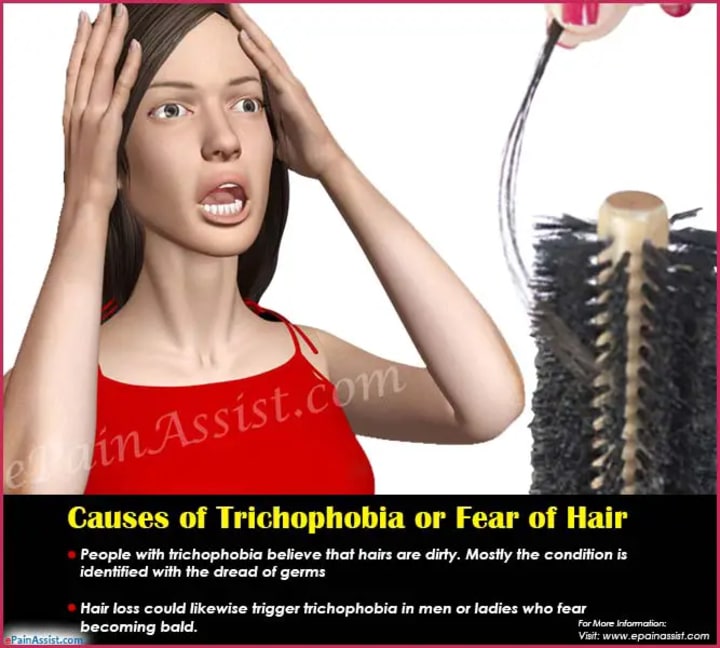TRICHOPHOBIA
What Is Trichophobia And Its Conclusion ?

Trichophobia, also known as trichotillomania, is a type of anxiety disorder characterized by an irresistible urge to pull out one's own hair. The hair pulling can occur from any part of the body where hair grows, including the scalp, eyebrows, eyelashes, pubic area, beard, and legs. The hair pulling can be carried out consciously or subconsciously and can result in noticeable hair loss and bald patches.
People with trichophobia experience a strong urge to pull their hair when they are stressed, anxious, bored, or upset. The hair pulling provides temporary relief from these feelings, which reinforces the behavior and makes it difficult to stop. In some cases, people with trichophobia may even develop rituals or routines around the hair pulling, such as pulling out hair in a certain order or counting the number of hairs pulled out.
There is no one specific cause of trichophobia, and it is thought to be the result of a combination of genetic, environmental, and psychological factors. For example, a family history of obsessive-compulsive disorder (OCD) or anxiety disorders may increase the likelihood of developing trichophobia. Similarly, experiencing traumatic events or chronic stress can trigger the onset of trichophobia in some people.
Trichophobia can have a significant impact on a person's daily life. The hair pulling can result in noticeable hair loss and scarring, which can cause shame, embarrassment, and social isolation. In addition, the repetitive and intrusive nature of the hair pulling can interfere with daily activities and cause significant stress and anxiety.
Diagnosis of trichophobia is based on a thorough medical and psychological evaluation. The healthcare provider will ask questions about the person's hair pulling behavior, including the frequency, duration, and location of hair pulling. The provider may also ask about any associated symptoms, such as anxiety or depression. A physical examination may be performed to assess for any physical signs of hair loss or scarring.
There is no one specific treatment for trichophobia, and the best approach will depend on the individual's specific needs and symptoms. Common treatments include cognitive-behavioral therapy (CBT), medication, and self-help strategies. CBT is a type of therapy that helps people identify and change negative thoughts and behaviors. In the case of trichophobia, CBT may focus on reducing anxiety and teaching alternative coping strategies to hair pulling.
Medication may also be used to treat trichophobia, particularly if the person is experiencing significant anxiety or depression. Selective serotonin reuptake inhibitors (SSRIs) are commonly used to treat anxiety disorders and have been shown to be effective in some cases of trichophobia. However, it is important to note that medication should not be used as the sole treatment for trichophobia and should always be combined with other treatments, such as therapy or self-help strategies.
Self-help strategies can also be useful in treating trichophobia. For example, people with trichophobia may find it helpful to keep their hands busy with activities such as knitting or playing with a stress ball. They may also find it helpful to avoid triggers, such as stress or boredom, or to practice relaxation techniques, such as deep breathing or meditation. Wearing a wig or using cosmetic products to cover up hair loss can also provide a sense of confidence and reduce the shame and embarrassment associated with hair pulling.

The conclusion of trichophobia is that it is a real and potentially debilitating condition for those who suffer from it. People with trichophobia experience intense anxiety and fear when they come in contact with hair or think about hair. This fear can negatively impact their daily life, causing them to avoid activities that involve hair, such as visiting a hair salon or washing their hair. Treatment for trichophobia typically involves therapy and exposure therapy to gradually overcome the fear. With proper treatment, it is possible for individuals to overcome their fear and live a more fulfilling life.






Comments
There are no comments for this story
Be the first to respond and start the conversation.